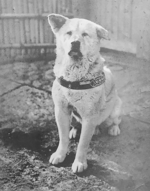Portal:Tokyo/Selected article
historical reference. . Either the page is no longer relevant or consensus on its purpose has become unclear. To revive discussion, seek broader input via a forum such as the village pump |
| Note: Article entries are now being transcluded directly on the main portal page. However, this page should be retained for historical reference. |
Selected articles
Usage
The layout design for these subpages is at Portal:Tokyo/Selected article/Layout.
- Add a new Selected article to the next available subpage.
- Update "max=" to new total for its {{Random portal component}} on the main page. (Edit main page)
Selected articles list
Selected article 1
Portal:Tokyo/Selected article/1
The Tokyo Tower ( Tōkyō tawā, pronounced [toːkʲoː taɰᵝaː] ⓘ, officially called 日本電波塔, Nippon denpatō, "Japan Radio Tower") is a communications and observation tower in the Shiba-koen district of Minato, Tokyo, Japan, built in 1958. At 332.9 meters (1,092 ft), it was the tallest tower in Japan until the construction of Tokyo Skytree in 2012. The structure is an Eiffel Tower-inspired lattice tower that is painted white and international orange to comply with air safety regulations.The tower's main sources of income are tourism and antenna leasing. Over 150 million people have visited the tower. FootTown, a four-story building directly under the tower, houses museums, restaurants, and shops. Departing from there, guests can visit two observation decks. The two-story Main Deck (formerly known as the Main Observatory) is at 150 meters (490 ft), while the smaller Top Deck (formerly known as the "Special Observatory") reaches a height of 249.6 meters (819 ft). The names were changed following renovation of the top deck in 2018. The tower is repainted every five years, taking a year to complete the process. (Full article...)
Selected article 2
Portal:Tokyo/Selected article/2
The shrine lists the names, origins, birthdates, and places of death of 2,466,532 people. Among those are 1066 convicted war criminals, twelve of whom were charged with Class A crimes (the planning, preparation, initiation, or waging of the war); eleven were convicted on those charges with the twelfth found not guilty on all such charges though he was found guilty of Class B war crimes. The names of two more men charged with Class A war crimes are on the list but one died during trial and one before trial so they were never convicted. This has led to many controversies surrounding the shrine. Another memorial at the Honden (main hall) building commemorates anyone who died on behalf of Japan, and so includes Koreans and Taiwanese who served Japan at the time. In addition, the Chinreisha ("Spirit Pacifying Shrine") building is a shrine built to inter the souls of all the people who died during World War II, regardless of their nationality. It is located directly south of the Yasukuni Honden. (Full article...)
Selected article 3
Portal:Tokyo/Selected article/3
Hachikō was born on November 10, 1923, at a farm near the city of
Selected article 4
Portal:Tokyo/Selected article/4 Underground (1997–1998) is a book by Japanese novelist
Selected article 5
Portal:Tokyo/Selected article/5




